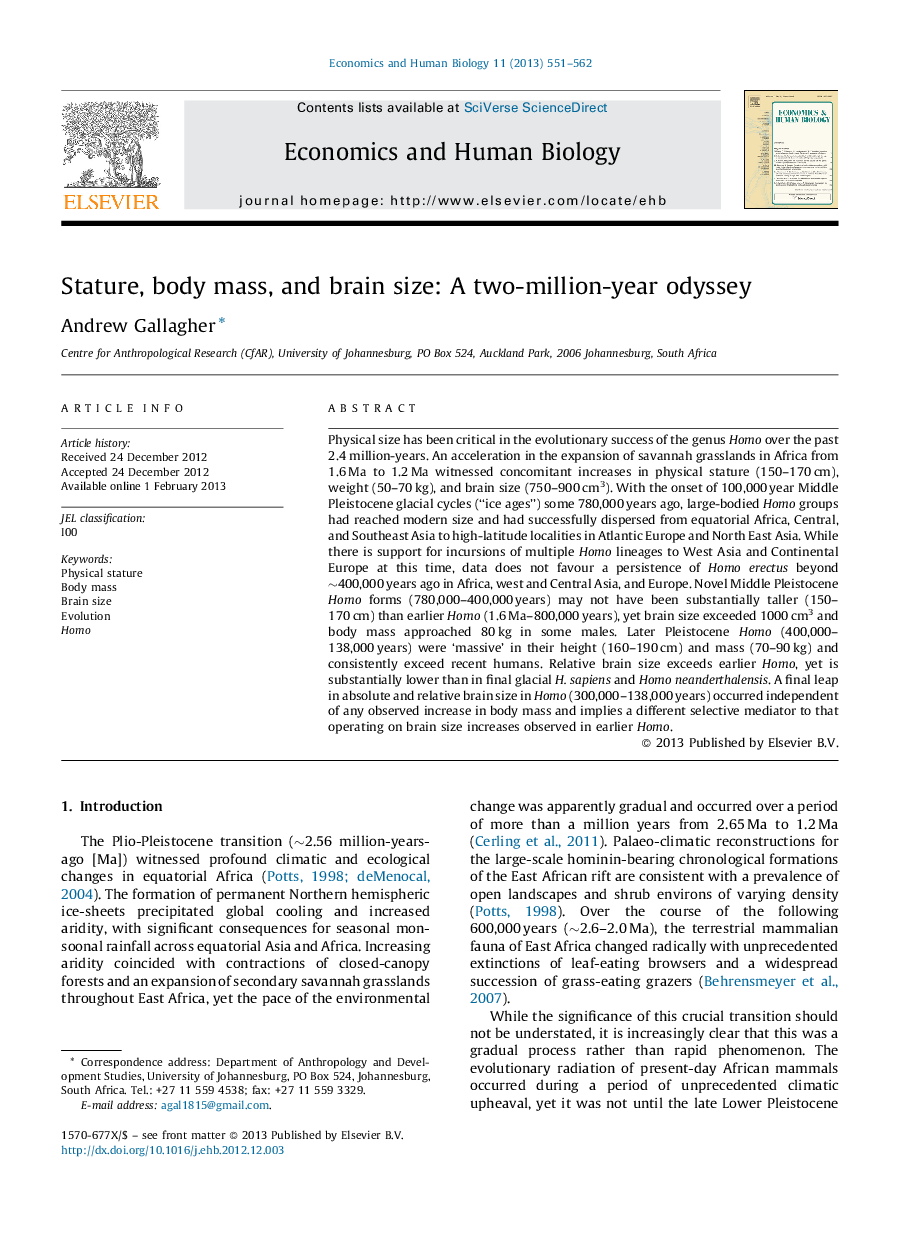| Article ID | Journal | Published Year | Pages | File Type |
|---|---|---|---|---|
| 5057109 | Economics & Human Biology | 2013 | 12 Pages |
Physical size has been critical in the evolutionary success of the genus Homo over the past 2.4 million-years. An acceleration in the expansion of savannah grasslands in Africa from 1.6Â Ma to 1.2Â Ma witnessed concomitant increases in physical stature (150-170Â cm), weight (50-70Â kg), and brain size (750-900Â cm3). With the onset of 100,000Â year Middle Pleistocene glacial cycles (“ice ages”) some 780,000Â years ago, large-bodied Homo groups had reached modern size and had successfully dispersed from equatorial Africa, Central, and Southeast Asia to high-latitude localities in Atlantic Europe and North East Asia. While there is support for incursions of multiple Homo lineages to West Asia and Continental Europe at this time, data does not favour a persistence of Homo erectus beyond â¼400,000Â years ago in Africa, west and Central Asia, and Europe. Novel Middle Pleistocene Homo forms (780,000-400,000Â years) may not have been substantially taller (150-170Â cm) than earlier Homo (1.6Â Ma-800,000Â years), yet brain size exceeded 1000Â cm3 and body mass approached 80Â kg in some males. Later Pleistocene Homo (400,000-138,000Â years) were 'massive' in their height (160-190Â cm) and mass (70-90Â kg) and consistently exceed recent humans. Relative brain size exceeds earlier Homo, yet is substantially lower than in final glacial H. sapiens and Homo neanderthalensis. A final leap in absolute and relative brain size in Homo (300,000-138,000Â years) occurred independent of any observed increase in body mass and implies a different selective mediator to that operating on brain size increases observed in earlier Homo.
⺠Body size (stature, mass) and brain size in the earliest members of the genus Homo were â¼40% greater than in earlier and contemporary australopiths. ⺠Available data supports a significant increase in body size and absolute brain size in later Lower Pleistocene Homo (1.4-1.2 Ma) with a further significant increase during the early Middle Pleistocene (800-500 ka). ⺠Absolute brain size increase in later Middle-Upper Pleistocene Neandertals and Homo sapiens cannot be tied to any obvious increases in absolute body size (stature, mass) and instead suggest selection for increased relative brain size. ⺠The onset of the last glacial cycle in MIS 5 (116-70 ka) witnessed further significant increases in absolute body mass and brain size, but likely not stature. Terminal Pleistocene (40 ka-9800 cal BP) Homo from Eurasia sample some of the largest individuals whom have ever lived.
